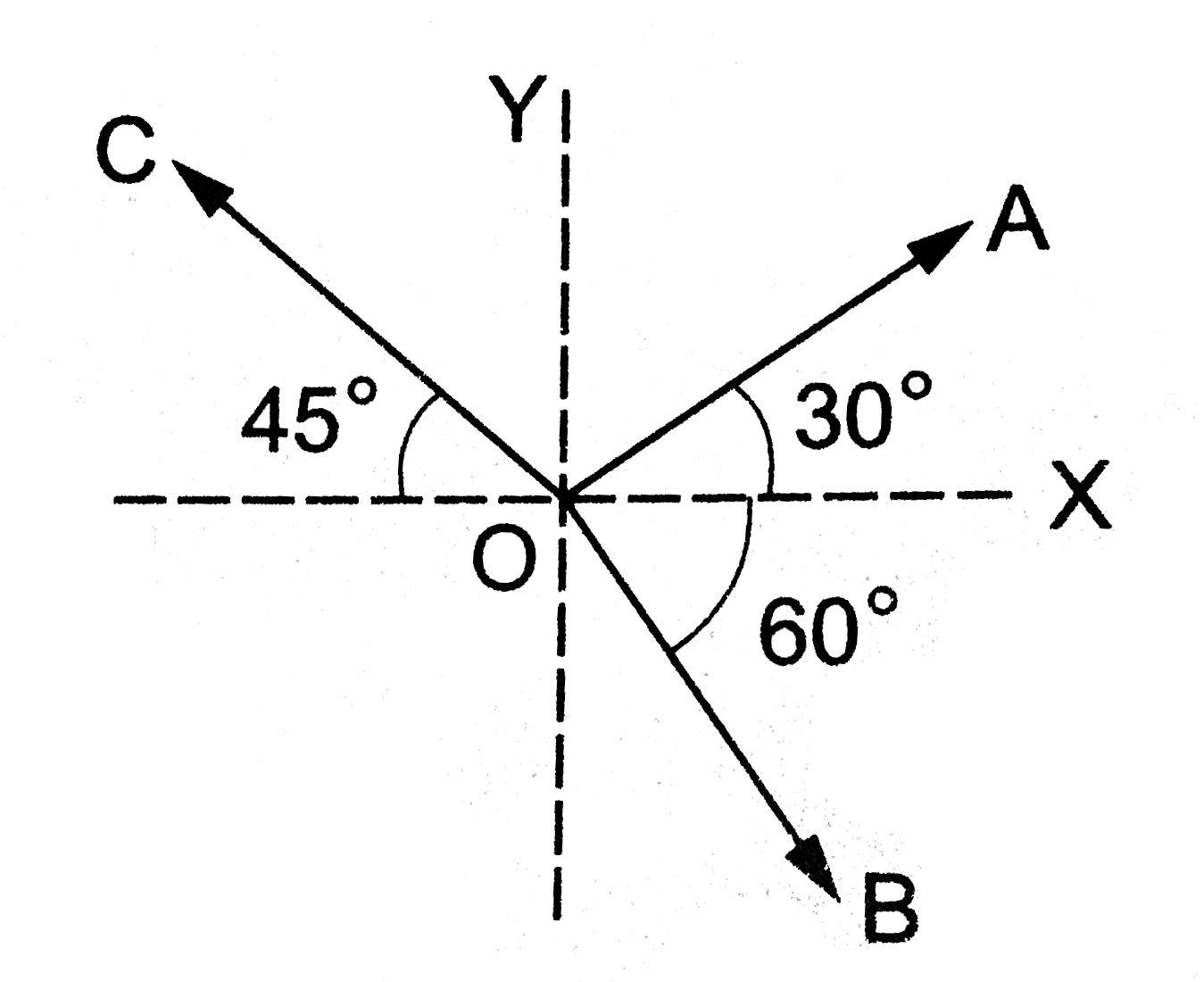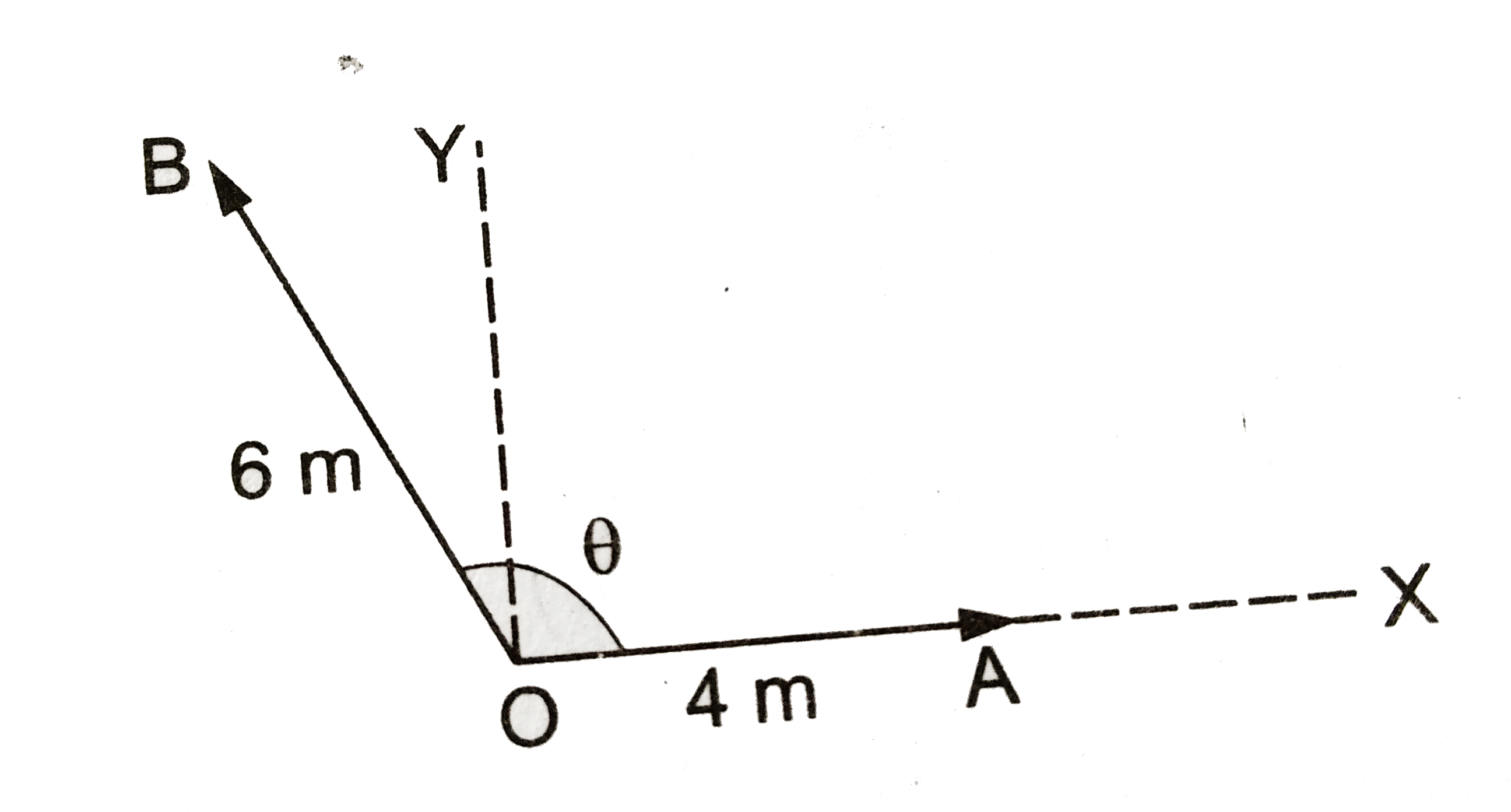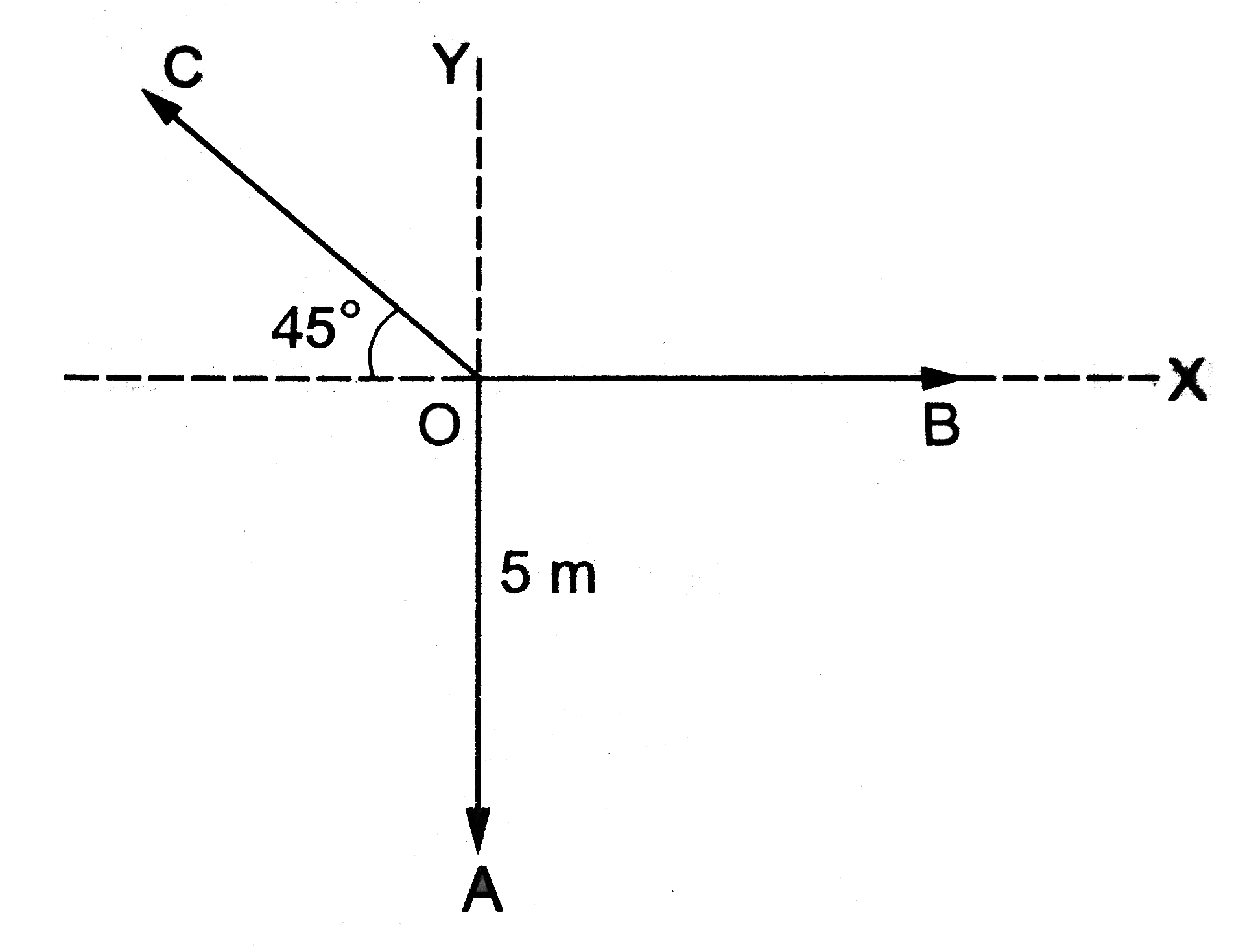The magnitude of vectors −−→OA,−−→OBand−−→OC in figure are equal. Find the direction of −−→OA+−−→OB−−−→OC.
 .
.
Let OA=OB=OC=F.
x - component of −−→OA=Fcos300=F√32
x-component of −−→OB=Fcos600=F2
x−compo≠ntofvec(OC)=F cos 135^0= - F/sqrt2<br>x-component of −−→OA+−−→OB−−−→OC
−(F√32)+(F2)+(−F√2)
=F2(√3+1+√2).
y-component of −−→OA=Fcos600=F2
y- component of −−→OB=Fcos1500=(F√32
y- component of −−→OC=Fcos450=F√2.
y-component of −−→OA+−−→OB+−−→OC
=(F2)(√3+1+√2)
y-component of −−→OA=Fcos600=F2
y-component of −−→OC=Fcos450=F√2
y-component of −−→OA+−−→OB+−−→OC
=(F2)+(−F√32−(F√2))
=F2(1−√3−√2)
Angle of −−→OA+−−→OB−−−→OC with the X - axis
=tan−1(F2(1−√3−√2))F2(1+√3+√2)=tan−1(1−√3−√2)1+√3+√2
Topper's Solved these Questions
- BOOK - HC VERMA ENGLISHCHAPTER - PHYSICS AND MATHEMATICSEXERCISE - Objective 16videos
PHYSICS AND MATHEMATICS
- BOOK - HC VERMA ENGLISHCHAPTER - PHYSICS AND MATHEMATICSEXERCISE - Objective 25videos
PHYSICS AND MATHEMATICS
- BOOK - HC VERMA ENGLISHCHAPTER - PHYSICS AND MATHEMATICSEXERCISE - Question for short Answer14videos
PHYSICS AND MATHEMATICS
- BOOK - HC VERMA ENGLISHCHAPTER - NEWTON'S LAWS OF MOTIONEXERCISE - Questions for short Answer17videos
NEWTON'S LAWS OF MOTION
- BOOK - HC VERMA ENGLISHCHAPTER - REST AND MOTION : KINEMATICSEXERCISE - Question for short Answer13videos
REST AND MOTION : KINEMATICS
Similar Questions
Find the resultant of the three vectors −−→OA,−−→OB and −−→OC shown in figure. Radius of the circle is R.
 View Solution
View SolutionFind the resultant of the three vectors −−→OA,−−→OB and −−→OC shown in figure. Radius of the circle is R.
 View Solution
View SolutionFind the resultant of the three vectors −−→OA,−−→OB and −−→OC shown in figure. Radius of the circle is R.
 View Solution
View SolutionThe resultant of vectors −−→OAand−−→OB is perpendicular to −−→OA. Find the angle AOB.
 View Solution
View SolutionThe resultant of vectors −−→OAand−−→OB is peerpendicular to −−→OA. Find the angle AOB.
 View Solution
View SolutionShow that the magnitude of vector sum of →aand→b cannot be greater than |→a|+∣∣→b∣∣ or smaller than |→a|−∣∣→b∣∣
View SolutionThe sum of the three vectors shown in figure is zero. Find the magnitudes of the vectors −−→OBand−−→OC.
 View Solution
View Solution→Aand→B are two vectors having the same magnitude . What is the condition that (i) the vector sum →A+→B and (ii) the vector differece →A+→B have the same magnitude as →Aand→B ?
View SolutionThree vector →A,→B, →C satisfy the relation →A⋅→B=0and →A.→C=0. The vector →A is parallel to
View SolutionThree vector →A,→B, →C satisfy the relation →A⋅→B=0and →A.→C=0. The vector →A is parallel to
View Solution

